
Aircraft leasing company FTAI Aviation (NASDAQ:FTAI) met Wall Street’s revenue expectations in Q3 CY2025, with sales up 43.2% year on year to $667.1 million. Its GAAP profit of $1.10 per share was 11.4% below analysts’ consensus estimates.
Is now the time to buy FTAI Aviation? Find out by accessing our full research report, it’s free for active Edge members.
FTAI Aviation (FTAI) Q3 CY2025 Highlights:
- Revenue: $667.1 million vs analyst estimates of $665.5 million (43.2% year-on-year growth, in line)
- EPS (GAAP): $1.10 vs analyst expectations of $1.24 (11.4% miss)
- Adjusted EBITDA: $297.4 million vs analyst estimates of $280.8 million (44.6% margin, 5.9% beat)
- EBITDA guidance for the full year is $1.46 billion at the midpoint, above analyst estimates of $1.20 billion
- Operating Margin: 30.1%, down from 32% in the same quarter last year
- Market Capitalization: $18.66 billion
“Our business had a strong quarter underpinned by continued growth in Aerospace Products allowing us to increase guidance for 2026 and raise our ordinary dividend,” said Joe Adams, Chairman and CEO.
Company Overview
With a focus on the CFM56 engine that powers Boeing and Airbus’s planes, FTAI Aviation (NASDAQ:FTAI) sells, leases, maintains, and repairs aircraft engines.
Revenue Growth
Reviewing a company’s long-term sales performance reveals insights into its quality. Even a bad business can shine for one or two quarters, but a top-tier one grows for years. Luckily, FTAI Aviation’s sales grew at an incredible 39% compounded annual growth rate over the last five years. Its growth surpassed the average industrials company and shows its offerings resonate with customers, a great starting point for our analysis.
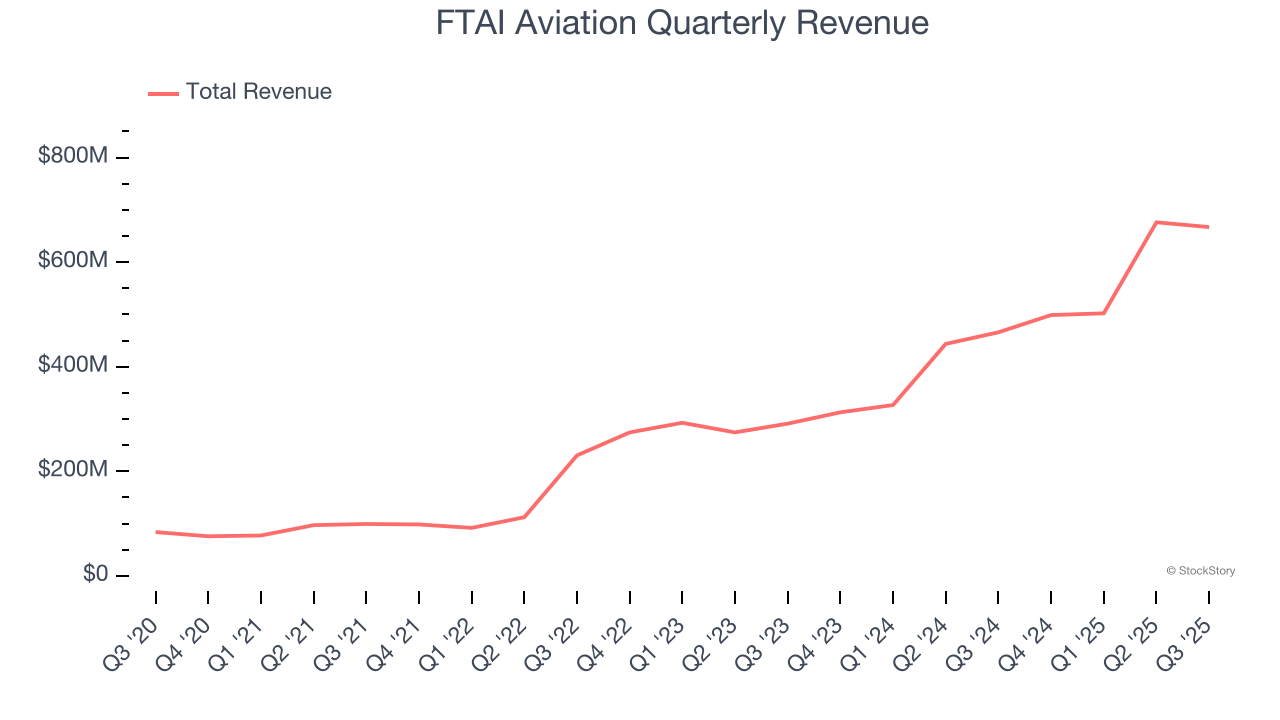
Long-term growth is the most important, but within industrials, a half-decade historical view may miss new industry trends or demand cycles. FTAI Aviation’s annualized revenue growth of 43.9% over the last two years is above its five-year trend, suggesting its demand was strong and recently accelerated. 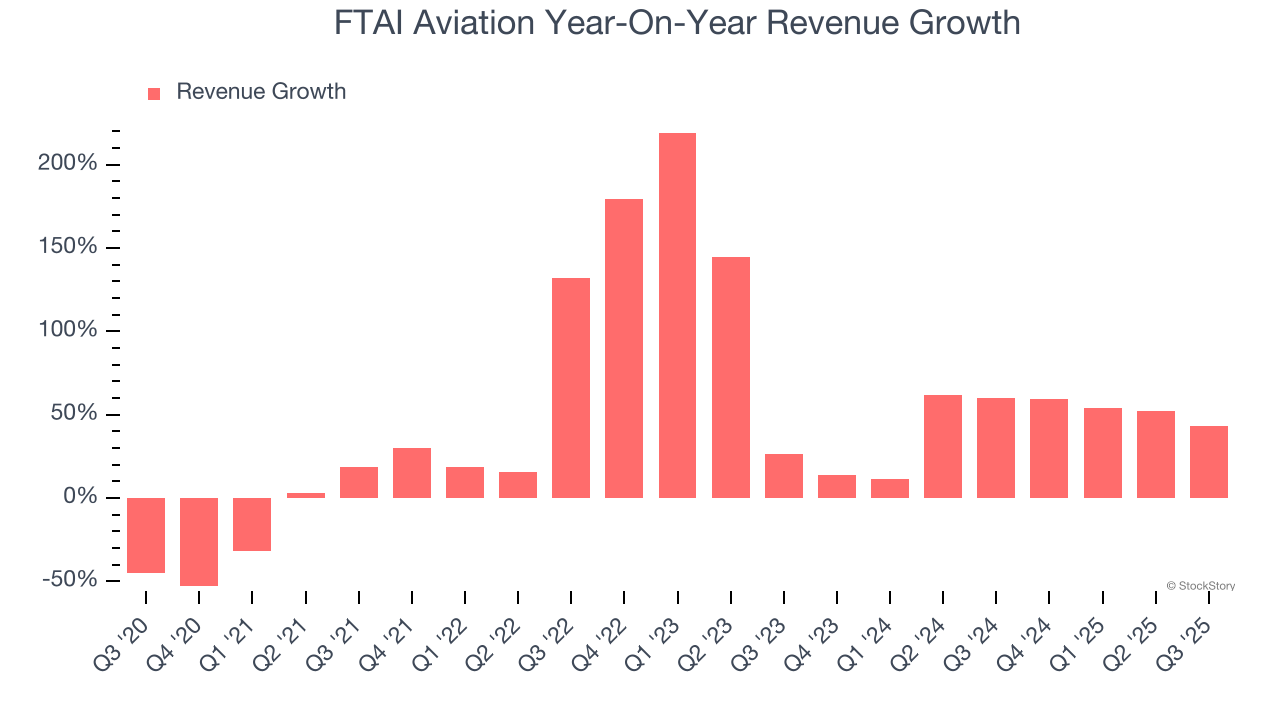
This quarter, FTAI Aviation’s year-on-year revenue growth of 43.2% was magnificent, and its $667.1 million of revenue was in line with Wall Street’s estimates.
Looking ahead, sell-side analysts expect revenue to grow 30.1% over the next 12 months, a deceleration versus the last two years. Still, this projection is admirable and indicates the market is baking in success for its products and services.
Here at StockStory, we certainly understand the potential of thematic investing. Diverse winners from Microsoft (MSFT) to Alphabet (GOOG), Coca-Cola (KO) to Monster Beverage (MNST) could all have been identified as promising growth stories with a megatrend driving the growth. So, in that spirit, we’ve identified a relatively under-the-radar profitable growth stock benefiting from the rise of AI, available to you FREE via this link.
Operating Margin
Operating margin is an important measure of profitability as it shows the portion of revenue left after accounting for all core expenses – everything from the cost of goods sold to advertising and wages. It’s also useful for comparing profitability across companies with different levels of debt and tax rates because it excludes interest and taxes.
FTAI Aviation has been a well-oiled machine over the last five years. It demonstrated elite profitability for an industrials business, boasting an average operating margin of 19.4%. This result isn’t surprising as its high gross margin gives it a favorable starting point.
Looking at the trend in its profitability, FTAI Aviation’s operating margin rose by 27 percentage points over the last five years, as its sales growth gave it immense operating leverage.
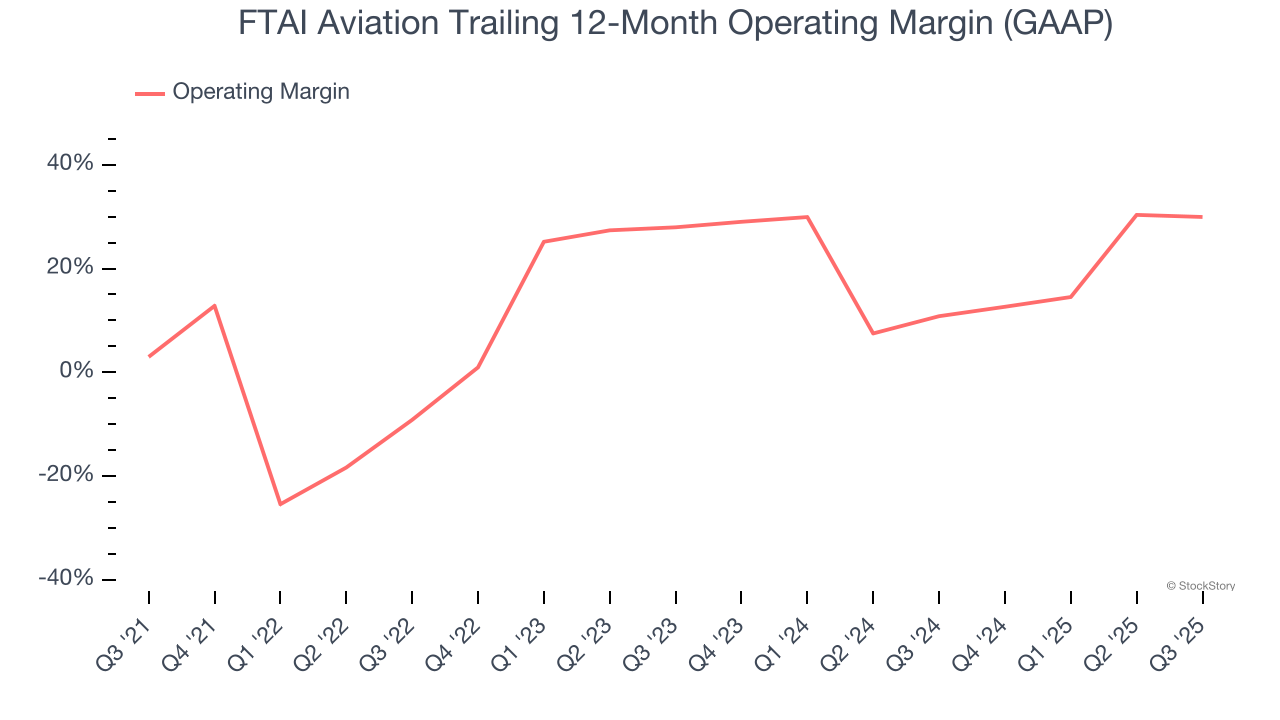
In Q3, FTAI Aviation generated an operating margin profit margin of 30.1%, down 1.9 percentage points year on year. Since FTAI Aviation’s operating margin decreased more than its gross margin, we can assume it was less efficient because expenses such as marketing, R&D, and administrative overhead increased.
Earnings Per Share
Revenue trends explain a company’s historical growth, but the long-term change in earnings per share (EPS) points to the profitability of that growth – for example, a company could inflate its sales through excessive spending on advertising and promotions.
FTAI Aviation’s EPS grew at an astounding 22.1% compounded annual growth rate over the last five years. Despite its operating margin improvement during that time, this performance was lower than its 39% annualized revenue growth, telling us that non-fundamental factors such as interest and taxes affected its ultimate earnings.
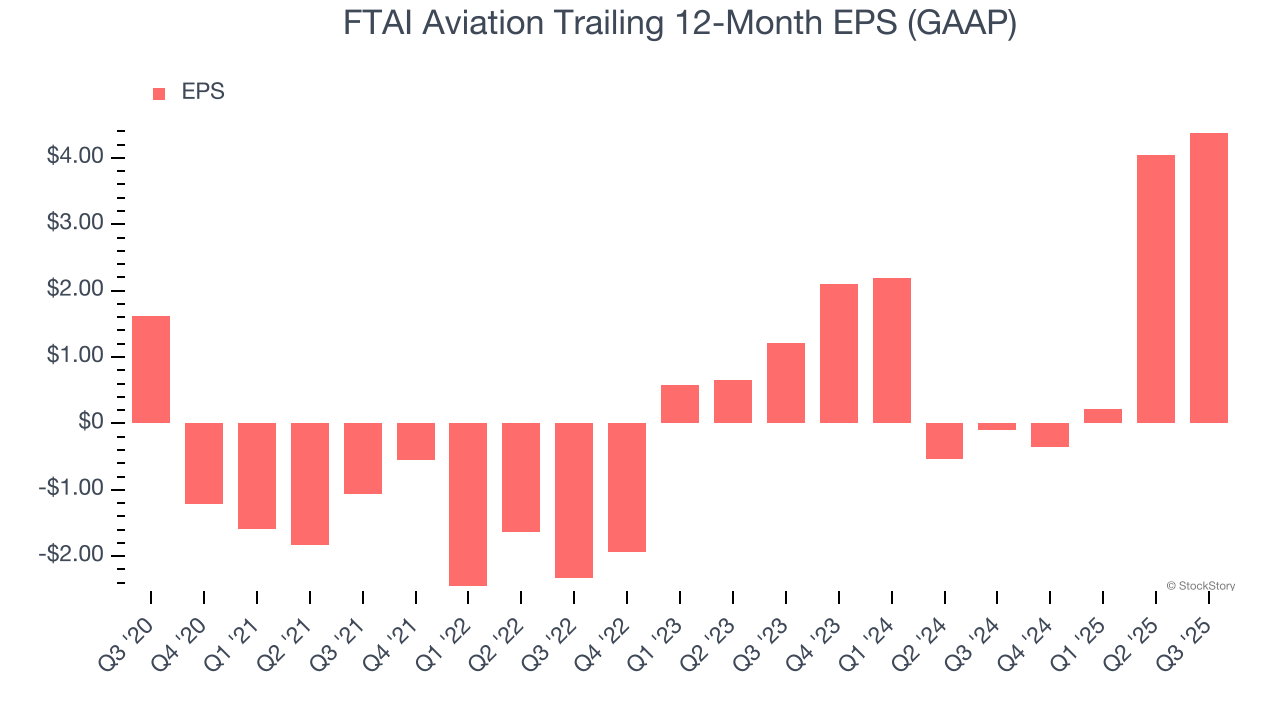
Diving into FTAI Aviation’s quality of earnings can give us a better understanding of its performance. A five-year view shows FTAI Aviation has diluted its shareholders, growing its share count by 20.9%. This dilution overshadowed its increased operational efficiency and has led to lower per share earnings. Taxes and interest expenses can also affect EPS but don’t tell us as much about a company’s fundamentals. 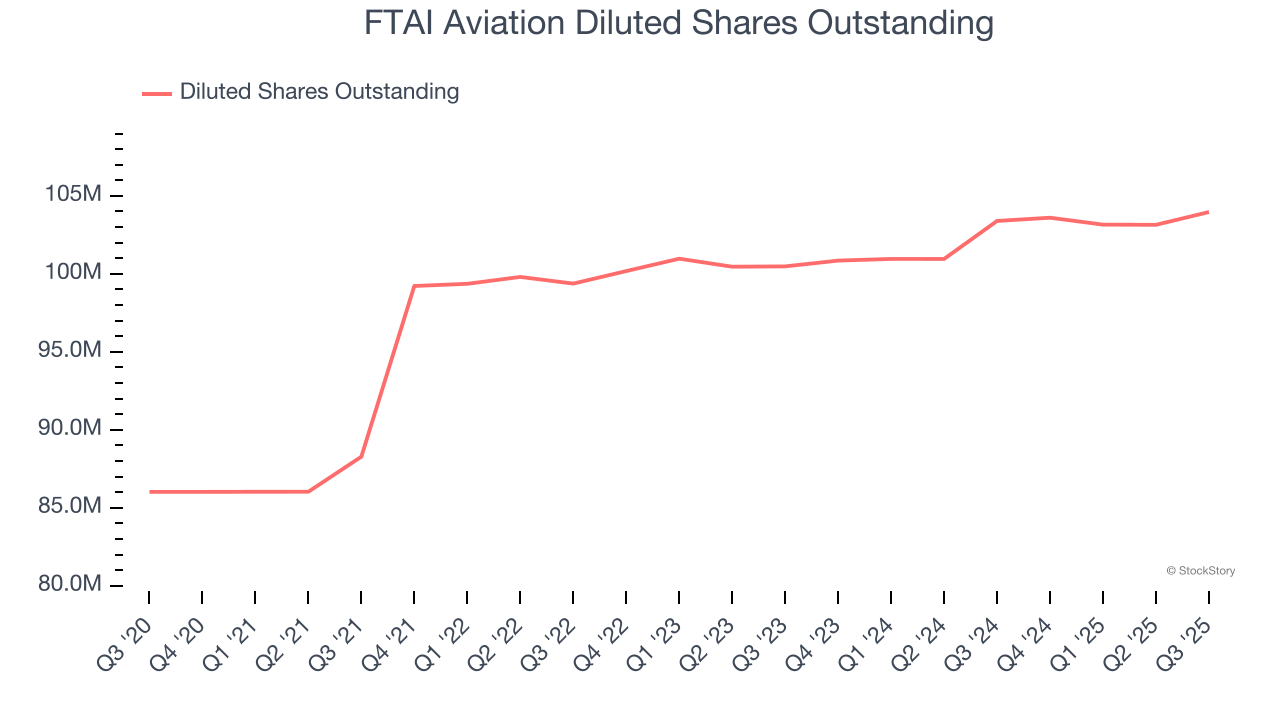
Like with revenue, we analyze EPS over a more recent period because it can provide insight into an emerging theme or development for the business.
For FTAI Aviation, its two-year annual EPS growth of 90.3% was higher than its five-year trend. We love it when earnings growth accelerates, especially when it accelerates off an already high base.
In Q3, FTAI Aviation reported EPS of $1.10, up from $0.76 in the same quarter last year. Despite growing year on year, this print missed analysts’ estimates, but we care more about long-term EPS growth than short-term movements. Over the next 12 months, Wall Street expects FTAI Aviation’s full-year EPS of $4.38 to grow 57%.
Key Takeaways from FTAI Aviation’s Q3 Results
We were impressed by FTAI Aviation’s optimistic full-year EBITDA guidance, which exceeded analysts’ expectations. We were also glad its EBITDA outperformed Wall Street’s estimates. On the other hand, its revenue was just in line. Overall, this print had some key positives. Investors were likely hoping for more, and shares traded down 5% to $176.08 immediately after reporting.
So do we think FTAI Aviation is an attractive buy at the current price? We think that the latest quarter is only one piece of the longer-term business quality puzzle. Quality, when combined with valuation, can help determine if the stock is a buy. We cover that in our actionable full research report which you can read here, it’s free for active Edge members.
